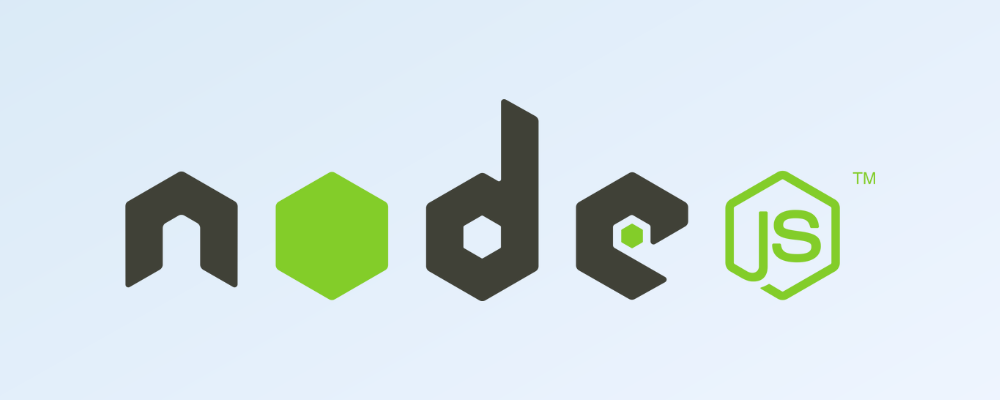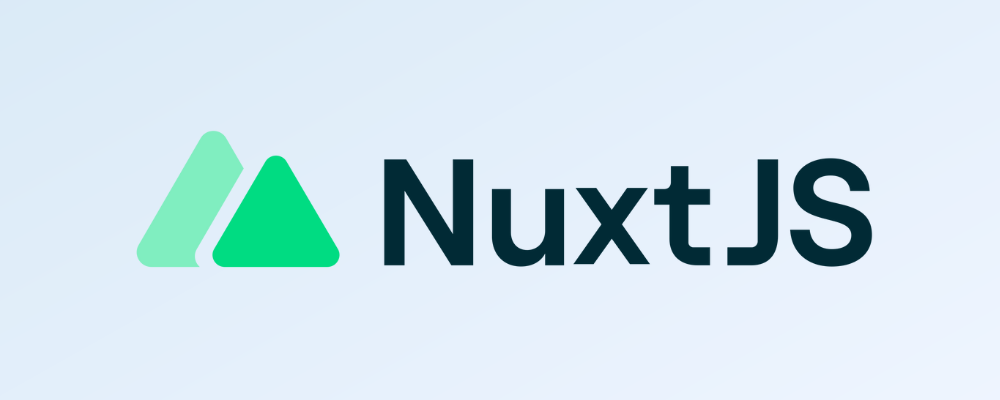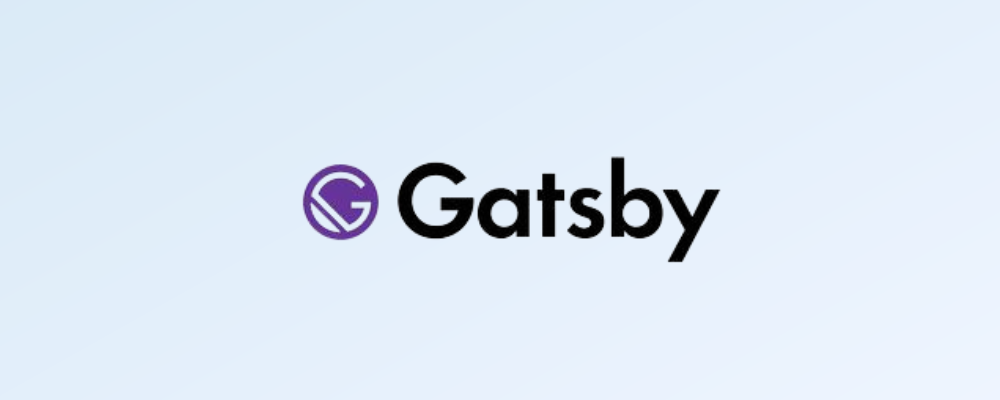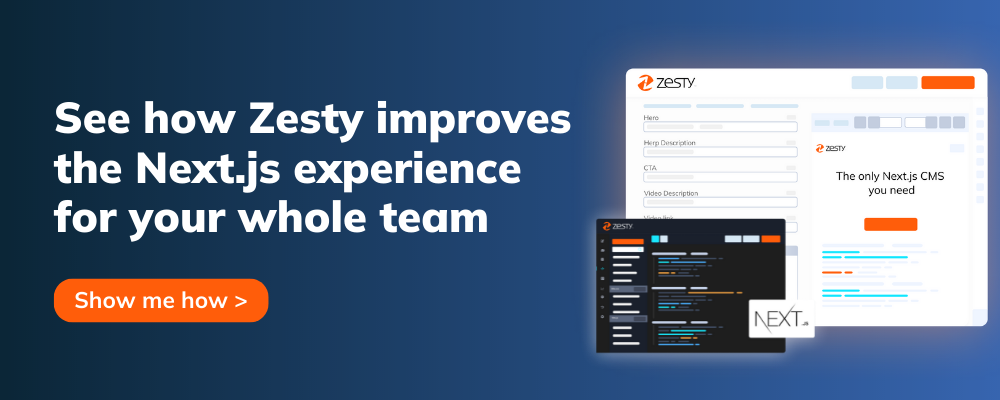A Developer's Guide to the JavaScript Framework Landscape 2023
Building frontend experiences today can be an arduous task, particularly for developers who need to be more versed in the ins and outs of JavaScript.
JavaScript is the most popular programming language around when it comes to modern web development and building frontend experiences. But with the assortment of frameworks, it can get a bit overwhelming.
Should you choose a tried-and-tested framework like Angular? Or opt for a more modern technology like Svelte? Just how many frameworks are there?
With this guide, we’ve removed that confusion for you, and we’ll offer the ultimate guide on the JavaScript framework landscape for 2023.
What you need to know about JavaScript
JavaScript is the programming language of the modern web. It is critical for creating interactivity and building an engaging and enjoyable user experience. The language works in the browser and is not only used for building websites but also for other web and mobile applications.
Created in 1995 by Brendan Eich as part of Netscape, JavaScript is often confused with Java. However, JavaScript is its own language and can be considered the standard for frontend development. If you think of the fillable contact forms, animations, and image slideshows you come across on the internet, all of this is made using JavaScript.
Vanilla JavaScript: Vanilla JavaScript is the plain version of JavaScript that doesn’t include additional libraries or frameworks. Created as a joke and popularized by Eric Wastl, it’s a reminder that JavaScript alone can be used to do several things.
Libraries: JavaScript libraries are sets of code that can be used to solve a specific problem. They include functions and objects that can be used to perform tasks. Code is flexible so that functions can be reused and repurposed rather than forcing developers to build everything from scratch each time.
Frameworks: A JavaScript framework is a tightly structured set of code. Think of it like a blueprint that must be followed. Frameworks allow you to be more efficient when working since they provide a neat structure to be followed and often provide ready-made solutions to specific problems.
Why is JavaScript so popular?
The popularity of JavaScript can’t be understated as it is used as the client-side language for 98% of websites, according to W3Techs. So why is JavaScript so popular?
Easy to Set Up: Unlike other programming languages, JavaScript’s developer environment can be found simply by opening the browser. This makes it easy for anyone to start learning JavaScript and is why it’s popular among all experience levels.
Assortment of Libraries & Frameworks: JavaScript offers several different libraries and frameworks which can be helpful in various use cases.
Large Community: JavaScript has a vast community of users, making it easier to locate talent and find support if necessary compared to other languages.
Omni-platform: Every device uses JavaScript, from desktops and laptops to tablets, digital kiosks, and IoT devices.
Evolving Digital Experiences: As more customer demands change regarding digital experiences, companies must focus on new and emerging channels.
Moreover, many organizations are also focusing on innovative approaches such as MACH architecture for building their technology ecosystems. The language at the heart of these frontend experiences is JavaScript, so the popularity can’t be expected to slow down anytime soon.
Now that we’ve explained what you need to know about JavaScript let’s dive into the frameworks.
Top JavaScript frameworks: key things to know
The ten frameworks we’ve highlighted have been chosen based on some of the most commonly used frameworks in Stack Overflow’s Developer Survey 2022. Here’s a rundown of some of the key things you need to know.
Framework | % of Developers Surveyed | Best Use Case | Biggest Pro | Biggest Con |
47.12% | Server-side applications | Scalability | Unstable APIs | |
42.62% | Social media apps (e.g. Facebook) | Scalability | Short development cycles | |
28.57% | WordPress themes | Easy learning curve | Debugging challenges | |
22.99% | RESTful APIs | Customizability | Callbacks | |
20.39% | Real-time data applications (e.g. weather app) | MVC architecture | Complexity | |
18.82% | Single-page applications | Tiny size | Not ideal for large projects | |
13.52% | Large complex websites (e.g. eCommerce websites) | Easy configuration | Routing | |
4.58% | Complex visualizations | No virtual DOM | No-cross platform use | |
3.83% | Server-side rendered applications | Automatic code splitting | Fewer resources | |
3.46% | Jamstack sites | Page loading times | Build time |
Deep dive into the top Javascript frameworks

Next.js
Website: https://nextjs.org/
Latest Release & Version: Next.js 13 Shipped October 2022.
What is it?
Next.js is an open-source web development framework based on React. Developers use Next.js for building fast and typically static pages and content. However, it can also be used with dynamic content and data.
There are three types of rendering available with Next.js: server-side rendering, client-side rendering, and static site generation. It also offers automatic code splitting, which can help to improve performance and make sites more responsive.
Key Features
Some of Next.js’ key features include server-side rendering, static site generation, static routing, and centralized development.
Top Use Cases
Large Complex Websites: Next.js is perfect for applications that require speed and swift response times, even as the design and UI elements become complex over time. For example, eCommerce sites where the customer experience is impacted by speed.
Landing Pages: Next.js works well for pre-rendered landing pages.
SEO: Next.js is an excellent solution for large websites that require SEO-optimized content.
Next.js Pros
Speed: Next.js offers unmatched page pre-rendering speed. This enables any changes made to a website to be visible in real-time.
Easy to Configure and Code: Next.js was built to simplify the deployment of React applications. It involves no-config web development with an easy-to-manage project flow. Consequently, making it an excellent framework for beginners to start their development journey and build complex applications using less code.
Image Optimization: Next.js allows developers to scale images smoothly according to changing viewports.
Next.js Cons
Routing: The routing system in Next.js is based on a filing system that only supports predefined static routing. Additional tools are required to incorporate dynamic routing in a Next.js application.
Restrictive: Next.js lacks flexibility for customizing its development features. It can feel a bit restrictive for developers.
Community Size: Next.js is newer than other long-established JavaScript frameworks. As a result, the community isn’t as vast as other frameworks, such as React or Vue.

React.js
Website: https://reactjs.org/
Latest Release & Version: Version 18.2 was released in June 2022.
What is it?
React is a JavaScript library used to build user interfaces and can cater to small or large websites alike. Developed by Meta (formerly Facebook) in 2011, React has been used as an open-source software since 2013.
React follows a modular approach to building user interfaces by breaking complex UI elements into HTML components.
Key Features
React’s key features include its reusable components, declarative and extensible code, dynamic routing, and client-side rendering.
Top Use Cases
Social Media Apps: Platforms such as Facebook and WhatsApp that require code to be compatible with both web and mobile app environments are one of the primary use cases of React.
News & email: React is used by Yahoo since it’s perfect for large platforms that require dealing with real-time data.
Single-Page Applications: Platforms that require dynamic re-writing of web pages, including single-page applications like Airbnb, are also ideal use cases for React.
React.js Pros
Reusability: The components in React simplify web development for everyone. Whether you want to use a small part of React or create a React app, these reusable components can be fixed anywhere and rendered whenever required.
Scalability: React was built to scale with web applications. React seamlessly adapts and extends to scale as much as required from small to big websites. For added features, React can easily be integrated with other frameworks to build a complete application.
Easy Coding: Most web developers are already familiar with JavaScript, as it is the most used language in web development. This familiarity brings ease and flexibility in coding with React.
React.js Cons
View Layer: On its own, React is meant for building just the user interface of an application. To reach its full potential, developers must integrate React with state container platforms.
Short Development Cycles: React is a constantly growing framework that goes through short development cycles to keep up with the development environment. The constant modifications require developers to relearn certain concepts regularly, which can be challenging.
Outdated Documentation: Another con of React’s short development cycles is that the documentation also falls behind in incorporating the rapid changes in its development environment.
Read more: Compare React.js to Next.js
Vue
Website: https://vuejs.org/
Latest Release & Version: v3.2.41 released August 2021.
What is Vue?
Vue.js is a JavaScript framework that Evan You created in 2014. A progressive framework, Vue.js is used to build user interfaces and SPAs and is incrementally adoptable from its core. Depending on the use case, it can also be used as a framework or a library.
Unlike other frameworks that have massive backing from the likes of Facebook and Google, Vue has grown in popularity through a vibrant community and has wide adoption on GitHub.
Key Features
Some of the key features of Vue.js that make it popular include support for ES5-compliant browsers, a core library that focuses only on the viewer, and a fast virtual DOM.
Top Use Cases
Some of the best examples of what you can build using Vue.js include navigation menus and order forms. Vue.js is also used on websites including Netflix, Grammarly, and GitLab.
Vue.js Pros
Tiny Size: Vue.js is a featherweight framework that can be quickly installed and won’t negatively affect the UX or SEO.
Virtual DOM Rendering: Vue.js uses a virtual DOM to maintain its speed.
Code Readability: Vue.js components are stored in separate files as a single file, making code easier to read, maintain and fix.
Vue.js Cons
Not Ideal For Large Projects: Despite the strong community backing, Vue still needs to catch up to other frameworks regarding sizeable financial support. As a result, Vue.js isn’t often used for larger projects.
Fewer Resources: Again, the lack of financial support for Vue (compared to frameworks like React and Angular) means that there are fewer resources, like plugins, that can be used to extend the framework.
Angular
Website: https://angularjs.org/
Latest Releases and Version: Google ended support for Angular ended in January 2022
What is Angular?
Angular was developed by Google and released in 2010. It is an open-source JavaScript framework that can be used to create web applications. Angular leverages declarative templates, end-to-end tooling, dependency injection, and more to make building web applications much easier.
Key Features
Some of Angular’s key features include support for 2-way data binding, quick and easy declaration of static documents, built-in testability, and support for dependency injection.
Top Use Cases
The most popular use cases for Angular include building eCommerce applications, real-time data applications (weather updates), and content portal applications.
Angular Pros
MVC Architecture: Web apps are divided into Model (data), View (the UI layer), and Controller (business logic). Development of each layer can be done in parallel, and the code is easier to understand and maintain.
Dependency Injection: Angular includes built-in rules for defining how code interacts and behaves under certain circumstances rather than creating those dependencies inside components.
Reusability: Developers can reuse components across different parts of a web application.
Angular Cons
Divided Community: Angular remains one of the more popular JavaScript frameworks, but its community is often divided on the capabilities of newer framework versions.
Complexity: Angular isn’t the easiest framework to use and is known to be verbose and complex, with a steep learning curve.
Nuxt
Website: https://nuxtjs.org/
Latest Releases and Version: Version v2.15.8 was released on August 11, 2021.
What is Nuxt?
Nuxt.js is an open-source JavaScript framework for building web applications. Inspired by Next.js, it is based on vue.js, node.js, Babel.js, and webpack. For Vue developers, Nuxt.js enables simple, quick, and organized web development.
Nuxt.js include highly effective functionality for web application development and static site generation.
Key Features
Some of Nuxt.js’ key features include:
Data Fetching: Nuxt.js allows you to fetch content from any source in Vue components, making them SSR-ready.
Zero Configuration: Start projects in seconds with zero configuration.
Components Auto-Import: It features immediate import of any component/directory with smart-code splitting.
SEO Optimization: Nuxt.js includes meta tag management, enabling quicker content time for great indexing.
Top Use Cases
Nuxt.js is ideal for building SPAs and use cases that require server-side rendering or static site generation.
Nuxt Pros
Enables deployment of fast and SEO-friendly full-stack Vue apps
Simple to use with a gradual learning curve
Provides versatility between SSR and SSG
Features automatic code splitting, solid directory layout and conventions, and effective teamwork
Nuxt Cons
Fewer resources and less extensive documentation due to a smaller community
Lack of some useful plugins and components, including Calendar, Google maps, etc.
Sometimes high traffic may burden your server
Only specific HOOKs enable Interaction with the DOM and query
Read more: Compare Next.js to Nuxt.js
Svelte
Website: https://svelte.dev/
Latest Releases and Version: v3.52.0 released October 2022.
What is Svelte?
Svelte is an open-source JavaScript framework similar to other frameworks such as React and Vue. While it enables developers to build interactive web applications just as they would with other frameworks, Svelte also offers a unique developer experience.
While other frameworks do most of the work in the browser, Svelte works while the app is being built and compiles to Vanilla JavaScript which in turn reduces the overhead and improves readability.
Key Features
Some of Svelte’s key features include fewer code requirements allowing for greater efficiency and no virtual DOM.
Use Cases
Svelte is useful for building small components of a user interface. Some of the primary use cases include web applications for low-power devices, interactive pages and complex visualizations.
Svelte Pros
Usability: Svelte includes an easier syntax for developers since code can be written into a .html or .svelte file without using “this” in code blocks.
Reduced Overhead: Code is compiled into Vanilla JavaScript.
No Virtual DOM: Declarative and state-driven code isn’t required with Svelte, removing the need for a virtual DOM.
Svelte Cons
No-Cross Platform Use: Svelte requires you to re-write code if you want to use it for both a web and mobile application.
Youthfulness: Svelte is a newer JavaScript framework, meaning that there aren’t many development tools or a solid community to draw support from.
Express
Website: https://expressjs.com/
Latest Releases and Version: 4.18.2 was released in October 2022.
What is Express?
Express.js is a flexible and minimalistic Node.js framework used for backend development. It was originally released as a free, open-source framework in 2010 under an MIT license. Express.js was made for building web applications and APIs and is the standard framework for Node.js.
Express allows developers to save time and resources rather than build a backend from scratch using Node.js.
Key Features
Some of Express.js’ key features include faster server-side development, an advanced routing mechanism, and templating engines.
Use Cases
Express.js is primarily used for building RESTful APIs.
Express Pros
Ease of Learning: Developers with experience using other JavaScript frameworks, particularly Node.js, will find Express.js easy to learn.
Customizability: Express.js can be customized to fit user needs.
Express Cons
Callback problems and client request issues due to the middleware are some of the main cons of Express.js.

Node.js
Website: https://nodejs.org/en/
Latest Releases and Version:v19.x released October 2022
What is Node.js?
Node.js is a server-side JavaScript runtime that runs on Chrome’s V8 JavaScript engine. Node.js executes JavaScript code outside of the browser and helps developers build fast, scalable, and reliable server-side applications. Developers can use Node.js to convert JavaScript code into machine code.
Key Features
Some key features of Node.js include fast code executive, a single-threaded model, quick data streaming, and minimum buffering.
Top Use Cases
The primary use cases for Node.js include building server-side applications, browser-based games, and real-time web applications. Companies like GoDaddy, LinkedIn, and IBM leverage Node.js for various use cases.
Node.js Pros
Scalability: Node.js is highly scalable and can manage multiple requests simultaneously, prioritizing them without slowing down.
Vibrant Community: As the primary backend development framework for JavaScript, Node.js features a large and engaged community of developers.
Node.js Cons
Nested Callback Issue: Running multiple queued tasks in the background can lead to nested callbacks that make code difficult to understand.
Unstable API: Node.js APIs aren’t stable, which can cause issues when migrating data.
Gatsby
Website: https://www.gatsbyjs.com/
Latest Releases and Version: Version 4.7.2 was released in February 2022.
What is Gatsby?
Gatsby is an open-source frontend framework originally viewed as simply a Static Site Generator. However, the framework has now evolved to include server-side rendering. Both approaches include pre-rendering functionality, which adds to the user experience by providing faster loading times.
Gatsby’s design approach is meant to keep the native code as lightweight as possible. It includes a vast ecosystem of plugins and templates to compensate for any feature loss. These templates and plugins provide developers with an easy starting point for their development journey and additional capabilities for their applications.
Key Features
Some of the key features Gatsby offers include the pre-rendering of pages to reduce server requirements, a vast open-source plugin ecosystem, and high performance.
Top Use Cases
Gatsby has several use cases, including B2B SaaS websites and eCommerce applications. It is a frequently used static site generator and beneficial for progressive web applications and building Jamstack sites.
Gatsby Pros
SEO: Gatsby provides SEO-efficient performance and speed.
Page Loading: Gatsby loads websites quickly, meaning that companies can reduce bounce rates.
Gatsby Cons
Build Time: Due to static loading Gatsby can take a long time to update, notably if a web application features tons of content.
Fewer Developers: While Gatsby is famous as a static site generator, it isn’t necessarily a go-to framework for developers since it can sometimes be complicated to use.
Read more: Next.js vs Gatsby

jQuery
Website: https://jquery.com/
Latest Releases and Version: Version 3.6.1 was released in August 2022.
What is jQuery?
jQuery is an older JavaScript framework and library created in 2006 by John Resign. The free, open-source software is licensed by MIT and is lightweight and feature-rich. jQuery enables simpler HTML document manipulation, traversal, and event handling.
Many sites rely on jQuery as it is easy to use with a minimalist API with a syntax similar to CSS, making it easy to learn.
Key Features
Some of jQuery’s key features include HTML/DOM manipulation, HTML event methods, and CSS manipulation. It also contains several plugins for numerous tasks.
Use Cases
Some of the most popular use cases for jQuery include building Ajax-based applications and as a key component in WordPress themes.
jQuery Pros
Easy to Learn: jQuery follows a clean and simple syntax, making its code easy to read, understand, and learn.
Popularity: jQuery is one of the most popular frameworks, used by over 70% of websites.
Extensibility: The vast ecosystem of plugins available for jQuery means that it can be easily extended to improve application functionality.
jQuery Cons
Not Great for Complex Projects: jQuery offers easy DOM manipulation, but this can backfire when building complex projects as the features can seem limited.
Debugging Issues: Adding more plugins and features also increases the number of dependencies in applications built using jQuery. This can present various debugging issues that take more work to resolve.
Honorable Mentions
While outside the Top 10 JavaScript frameworks found in Stack Overflow’s survey, these other five frameworks continue to grow in popularity, and developers should take note of them.
Nest
Nest.js is a Node framework primarily for developing server-side applications. Released in 2017 as an open-source web development platform, Nest.js framework is built using Typescript and offers a component-based architecture inspired by Angular. Some characteristics of applications built using Nest.js include high scalability and testability.
TypeScript
TypeScript isn’t a JavaScript framework per se but rather an object-oriented, compiled programming language that builds on JavaScript. Known as a superset of JavaScript, TypeScript provides tooling at any scale and is often referred to as JavaScript with more features. The open-source language and framework include backing from Microsoft, which should explain its growing popularity.
Bootstrap
Bootstrap is an open-source framework for frontend development that enables developers to build fast and mobile responsive websites. Originally released in 2011, Bootstrap gives developers increased flexibility and saves them time, particularly when writing CSS code.
Backbone
Backbone.js is a lightweight JavaScript framework based on the model view presenter (MVP) architecture. Backbone essentially separates concerns which enable a better structured and maintained application. Created in 2010, Backbone includes a RESTful JSON interface that is beneficial for building client-side web applications.
Remix
Remix is a full-stack JavaScript framework for web development. It was created by the React-router team in 2020 and open-sourced in 2021. This latest addition to the React-based tools provides an edge native framework for building modern, fast, and robust developer and user experiences.
Zesty.io: The Ultimate JavaScript CMS
We’ve only listed a handful of JavaScript frameworks, but the ecosystem is enormous, and new updates are being released regularly. Regardless of the JavaScript framework, having a robust CMS that can help you get the most out of the front-end experience is crucial.
Zesty.io is a flexible headless CMS that integrates with any JavaScript framework. With Zesty.io, everything is handled in the backend while you have total control over where and how your content is deployed. Zesty.io also includes an easy-to-use schema for content modeling, automated SEO, and faster page loading times.
While being a headless CMS and framework agnostic enables Zesty.io to handle any JavaScript framework, we are firm advocates of Next.js and allow you to get more out of Next.js than any other headless CMS. With our Next.js integration, you can automatically resolve Next.js pages using minimal configuration, change content schemas how you need without worrying about changing code, and so much more.
Also, unlike other headless CMSs that don’t cater to content authors, Zesty.io offers hybrid functionality to give them a similar content authoring experience to the one they might have known from a traditional CMS.
Now you can build the perfect digital experiences for your audience with a flexible-API headless CMS. Take a look at our Next.js integration to learn more.







